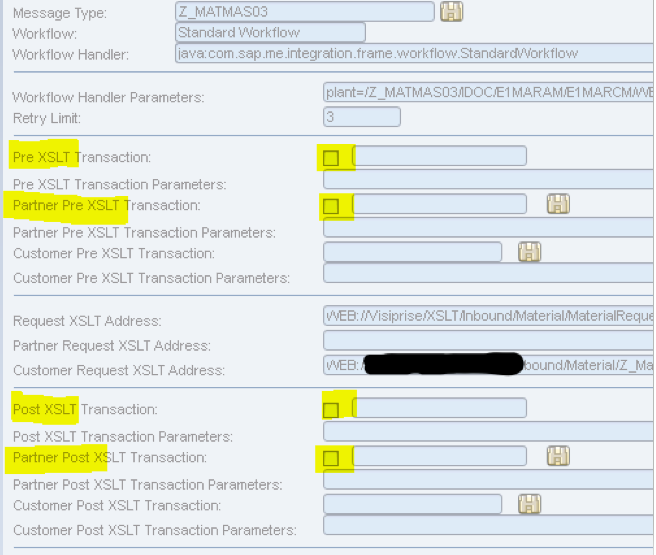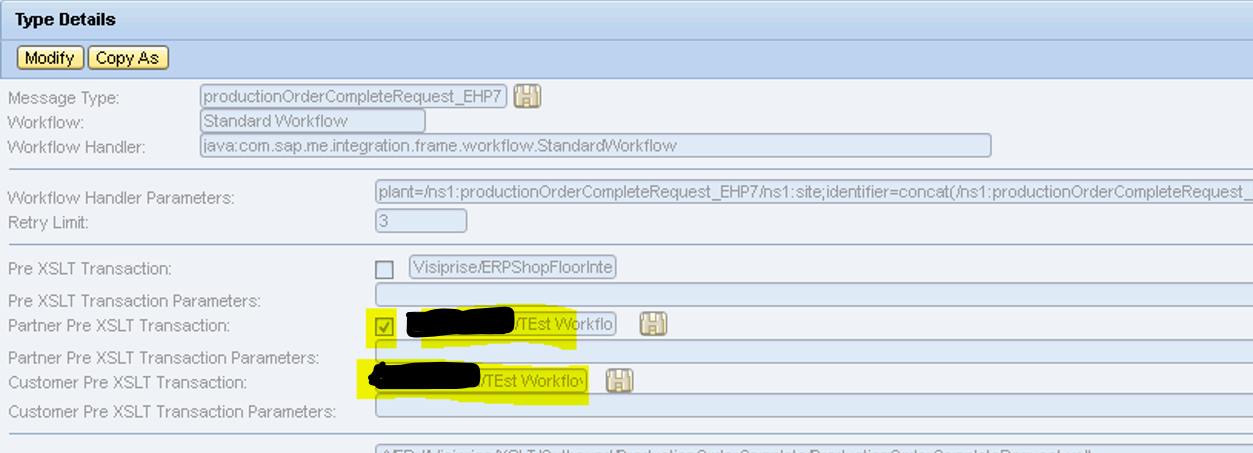Hi Folks,
My blog post is regarding some newly introduced features of the MEINT workflow. After completing the blog post, you will be able to understand the usage & advantages of those features which can be used in an optimum level to implement any desired functionality.
Recently many of you probably have noticed a checkbox in Standard / partner pre or post XSLT in MEINT workflow. If not yet, then please have a look below.
😊

These checkboxes were not there earlier. Suddenly these have been introduced by SAP & made them visible in all the 91 no. of available workflows in MEINT. Therefore, without further surprise, following obvious questions came into my mind after seeing the above changes in MEINT.
- The usage or utility of the checkboxes
- If the checkbox is introduced for standard & partner XSLT, then why not the same for customer XSLT?
- It’s well-known that the standard XSLT cannot be modified by partner or customer. If the partner or customer XSLTs aren’t customized, then by default the standard one will be executed. Then what is the point of activating the standard XSLT by checking the checkbox externally?
To find all the answers, me & my colleague
Mr. Palavesa Muthu have explored the area in details & found out the following facts.
To test the functionality of the checkboxes, we wrote some custom logic for a workflow & placed the BLS link in different places of the workflow to find out the difference in behavior.
Case1: Configured Standard and Partner pre–XSLT Transaction (only standard is activated)
Standard and partner pre-XSLT transactions are configured, and standard transaction checkbox is selected.

Message is Enqueued.

Both standard and partner transactions got executed.

Case2: Configured Standard and Partner pre–XSLT Transaction (only Partner is activated)


Only the Partner transaction got executed.

Case3: Configured Standard and Partner pre–XSLT Transaction (nothing is activated)


Only Partner transaction got executed.

Case4: Configured Standard, Partner and Customer pre–XSLT Transaction (Both Standard & Partner are activated)


All three transactions got executed.

Case5: Configured Standard, Partner and Customer pre–XSLT Transaction (only Standard is activated)


Standard and customer transactions got executed.



Case6: Configured Standard, Partner and Customer pre–XSLT Transaction (only Partner is activated)


Partner and customer transactions got executed.

Now what?? The head started spinning after seeing so many screenshots??
Don’t worry. We have summarized the whole investigation & the learning from it in a nutshell below for a quick reference.

Hope the above analysis has given a detail picture of the newly introduced checkboxes, its utility & advantages.
Please feel free to provide your valuable comments & feedback. Don't forget to like it if it enhances your knowledge. I'll be happy to answer your questions & clear your doubts in comment section.
With Best Regards,
Puspita Dutta
